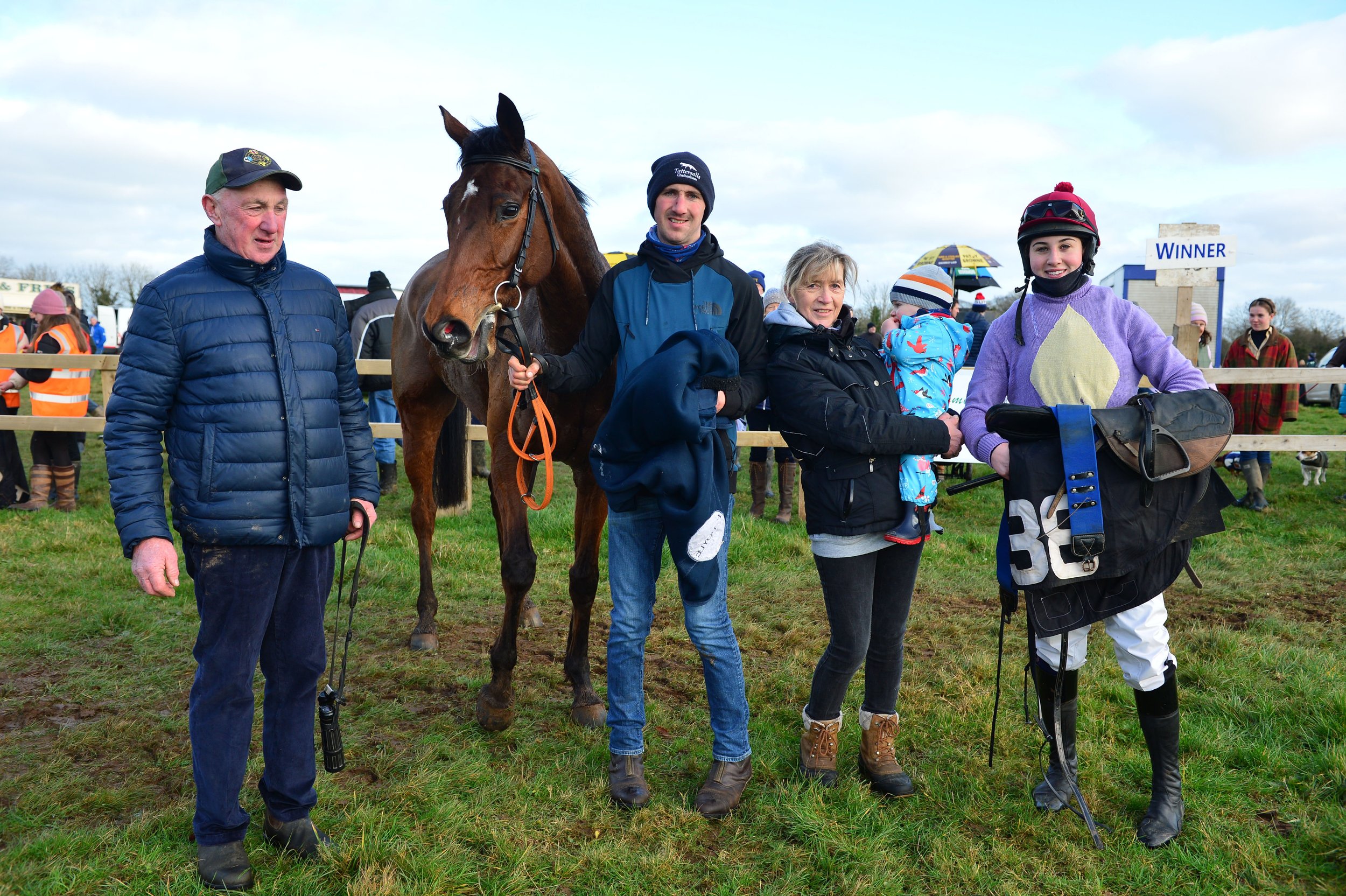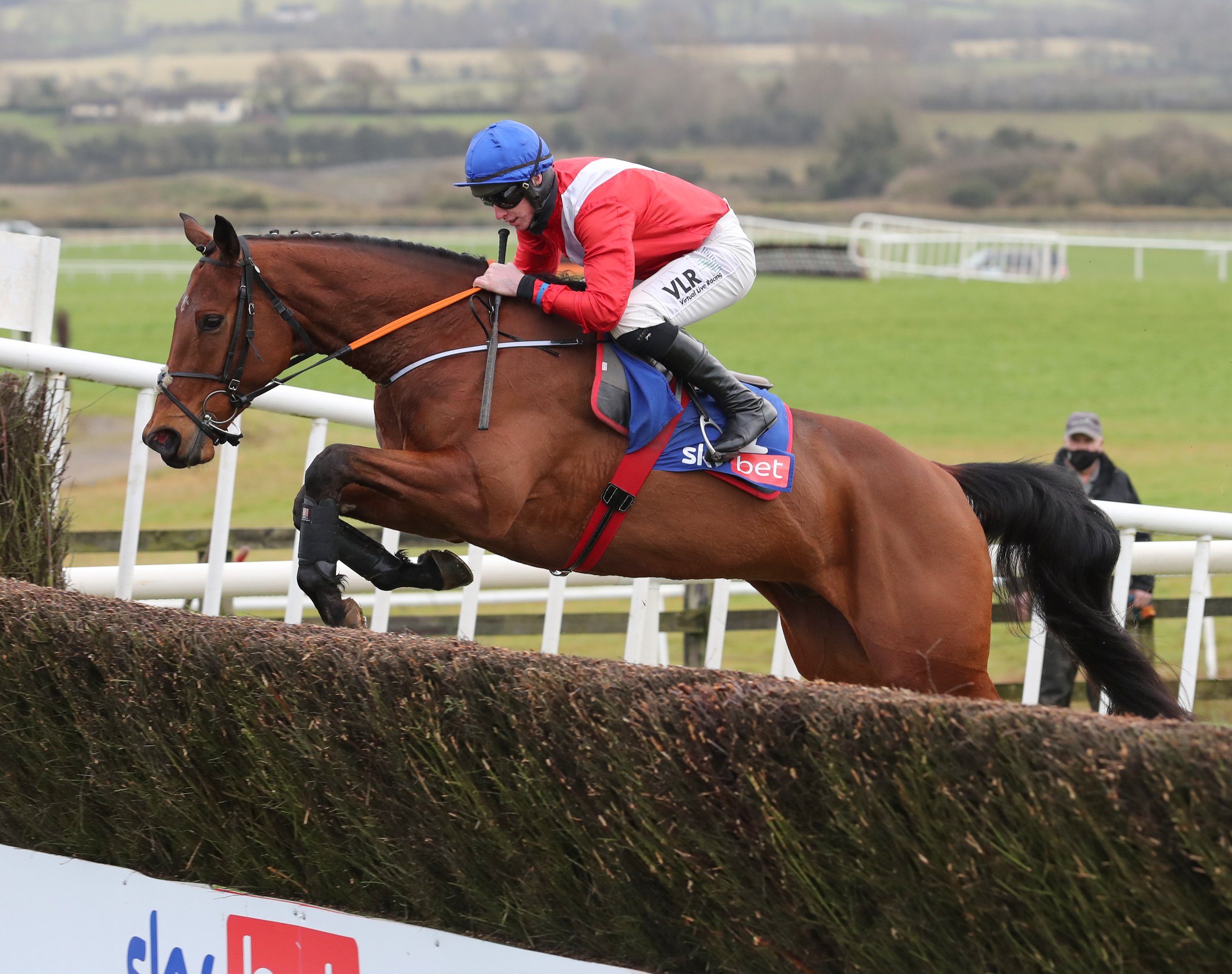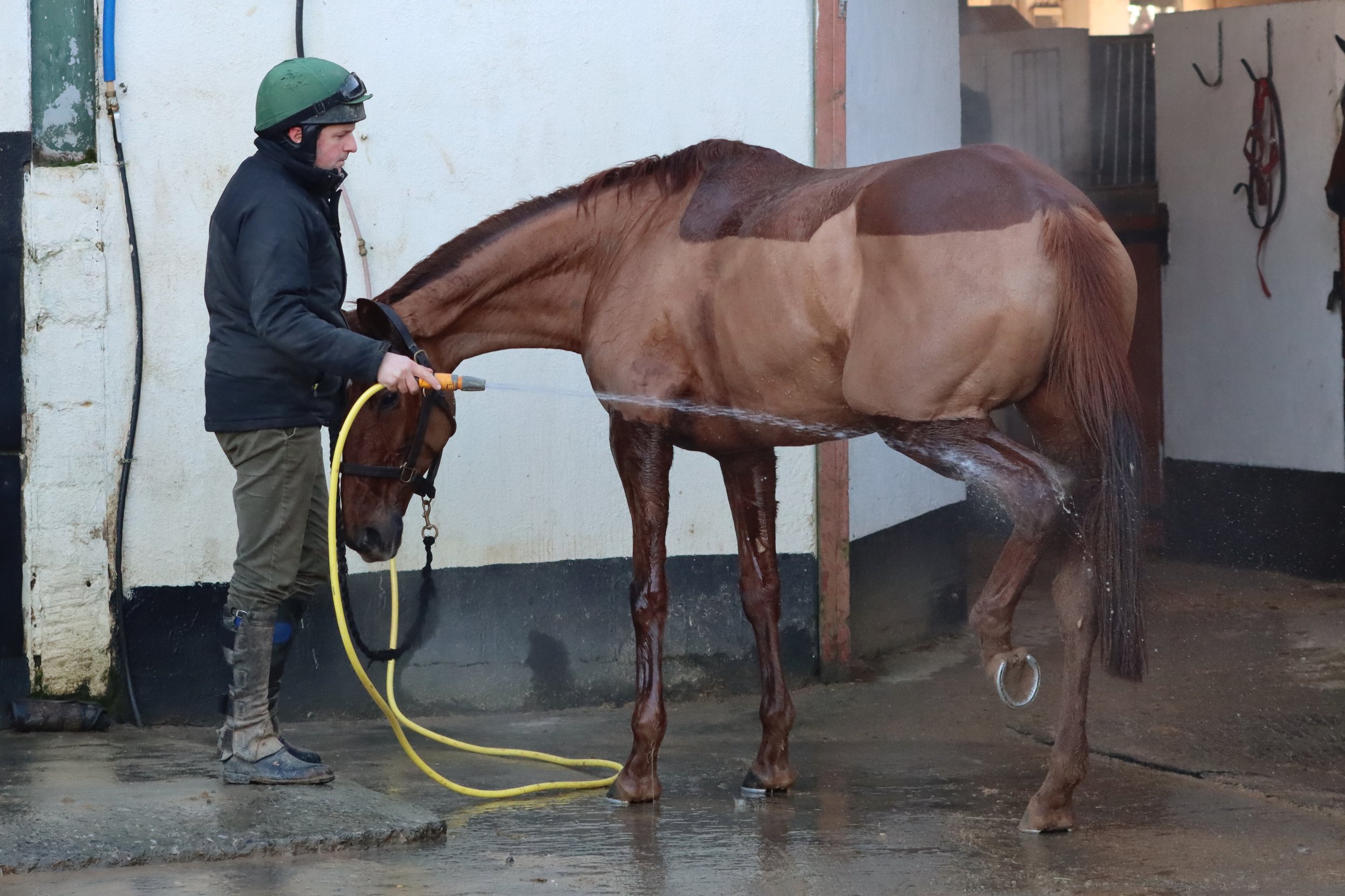Pre-trainers and their influence on Irish NH racing
Article by Daragh Ó Conchúir
Pre-trainers have always existed but there is far more prevalence in recent times, be that to lighten the loads of trainers themselves or, ever increasingly, within a business model of providing licensed conditioners with ready-to-run horses, or as near as dammit.
It was interesting to see former Irish Racehorse Trainers’ Association chief executive, Michael Grassick opine in The Irish Field on December 17 that pre-trainers were actually impacting negatively on the men and women he used to represent – and indeed was one of, before handing over the reins to his son, Michael Jnr – as it made it more difficult for them to retain staff.
Surely, though, the only reason a yard uses such services is because it doesn’t have the time, manpower or expertise to do the job. It makes no sense for trainers to add to an already hefty catalogue of expenses if they and their staff are twiddling their thumbs for “three, four and five months,” as Grassick seemed to suggest.
Trainer Tom Mullins isn’t a fan of the point-to-point production line in Ireland, believing that more potential owners are choosing to invest in stores with a view to a quick return at the boutique NH Sales, rather than going in on a young horse to race. But that route is available to everyone within the industry. If you want to work full-time with horses, you have to find a niche, or create one.
We all know Barry Geraghty as the former champion jockey who won the Grand National, and counted two Gold Cups, five Champion Chases, four Champion Hurdles and two Stayers’ Hurdles among his 43 Cheltenham winners.
Long before he called time on his career in 2020, Geraghty was pre-training young horses at home in Hallstown, just outside Dunshaughlin, and moving them on, most of the time through the point field via Warren Ewing and Aidan Fitzgerald. His second Gold Cup triumph came in 2013 on Bobs Worth, a horse he had sold to Nicky Henderson as an unbroken store.
There have been plenty others that have had good careers but Supreme Novices’ Hurdle winner, Champion Hurdle favourite Constitution Hill and Tipperary 4yo maiden runner-up, does have the potential to be the best of his many graduates.
“It’s getting harder at all levels,” as Geraghty explained. “With the price of foals, the price of stores, it’s harder to get what you’re looking for. Bobs Worth, he was bought as a yearling and sold as a four-year-old unbroken store. As I got older, I would have got involved with Warren Ewing buying stores and going straight to the point-to-point field with them. But then we’ve been buying foals as well since then.
“For example, Constitution Hill was bought as a foal. I would have kept him for three years, broken him as a two-year-old, pre-trained him as a two-year-old, pre-trained him as a three-year-old until the autumn and then he went up to Warren’s to be trained for a point-to-point.”
John Nallen, famous for the Minella soubriquet in honour of his Clonmel hotel and who produced Minella Indo and Minella Time to win a Gold Cup and Grand National within a few weeks of one another in 2021, is another who focuses on foals. So too Walter Connors, the man who found Gold Cup winner Don Cossack as a foal in Germany, as well as ill-fated Champion Hurdle hero Espoir D’Allen and multiple Grade 1 victors Envoi Allen and Bacardys.
More can go wrong in that length of time but the outlay is lower and there is less intensity required with the work. And to be able to break them younger is a considerable advantage.
In days of yore, National Hunt horses might not have come out of the field until they were five or six. But all athletic pursuit has advanced and science tells us that once the loading is appropriate, earlier development and conditioning work pays off in the long run.
“It’s like the underage structure with county teams, the strength and conditioning that’s being done with 15- and 16-year-olds. They’re your two-year-olds and three-year-olds. So then you’ve a young lad coming out of minors and he’s as big as (GAA footballer of the year) David Clifford.
“And it’s only teaching them graft. It’s not hardship. You’re not galloping them. You’re conditioning them. If you’re to keep a horse right through from a foal to running in a point-to-point or a bumper, it’s an awful lot easier physically to break them at two than it is at three, but there’s great development in it for them too, both physically and mentally. I think you can connect with them well. Because you’re not having the struggle that you might have with a bigger horse, it makes them more amenable, which is a positive thing for when they go into training. They’ve learned rather than been taught.”
As the Meath native acknowledged, acquiring the raw material is the key starting point.
“You’re looking for the best individual you can get, in every sense and obviously a certain level of page to back it as well – sire, damsire. Your budget won’t allow you to buy perfection (so) you just have to pare back as to where you are with your budget and what are the acceptable faults.”
Judging from the laugh that greets the query about what flaws you might be willing to accept, it isn’t always straightforward.
“It’s very hard to sell one by an unfashionable sire. It doesn’t help. There’s lots of different things. A horse is probably judged at his harshest at the store sale. Whereas he goes and wins a point-to-point, his faults might be more acceptable.”
WALTER & DAVID CONNORS
Walter Connors is renowned as the pioneer of sourcing foals in France – Envoi Allen and Espoir D’Allen were in the same field at Bruno Vagne’s Elevage Allen when the Waterford man picked them out – and he chooses what route he takes to disperse his stock in accordance with those faults Geraghty refers to.
“It’s pretty random with us, the selection of what goes to the sales and what doesn’t,” Connors told me. “A horse could be backward and not fit for the sales so we might point-to-point him but it’s a blank canvas on the first of January and while we aim for the sales, there’s always one reason or another why a horse doesn’t make it and we’ll point-to-point instead.”
After the best part of three years growing up at Sluggara Farm in Dungarvan, Envoi Allen was prepped by Colin Bowe a for a facile triumph in a Ballinaboola maiden because Muhtathir was not a sire that got the market’s pulse racing. But Connors would not like to have his entire investment, or anything like it, relying on form, albeit that the decision to focus on foals is budget-driven.
“Buying foals has worked out okay for us but it’s full of risk,” the vet stated. “All you can see at that stage, is whether they’re big or small. We try and have a look at them as they’re coming along and see how they’re developing. But when did I know Envoi Allen was a good horse? When he jumped the second-last in Ballinaboola. That’s the reality of it. All we can do is try and improve the way we rear them, to make sure they get the best chance they can.
“Buying foals and selling as three-year-olds means you have a lot of capital tied up. You have three years of stock on hand before you have something to sell. Then when those horses are sold, hopefully it takes the pressure off the horses in training. I am full of admiration for the lads depending on form for everything.”
Nallen and Pat Doyle are in that latter category, though Nallen acquires foals mostly and Doyle focuses primarily on the more expensive but more immediate turnaround of stores.
Doyle, who broke Champion Hurdle legend Monksfield and subsequently educated and sold Grand National and Grade 1 winner Minnehoma as well as other top-flight victors Bob Olinger, Shattered Love, First Lieutenant and Brindisi Breeze, bought Appreciate It and Asterion Forlonge as stores the same day for €60,000 each before selling the future Grade 1 winners.
“Nowadays horses are pretty well done from the time they’re foals,” Doyle detailed.” It’s not like it was 20 years ago. Three-year-olds weren’t touched until six weeks before sales. It’s totally different now. Most of the three-year-old stores have been to a sale as stores and they’re very professional men, the men that buy them.
“We’ve a few fellas around here and they would bring their yearlings in for the winter and probably put breaking tack on them and drive them on long reins, and probably do that for the months of December, January and February, and probably do it again their two-year-old days. They’re so well-handled, horses are a lot more forward than they were.
“We don’t like to do things too quick. It actually takes me probably between four and five months to get a horse to where I want to get him. You will get the odd horse that will get there in four months. We break them, let them out for a month and bring them back in the middle of August. We do an awful lot of conditioning work before we’d do anything else. You’re talking five good months.“
There is an important theme here. Sometimes, the charge is levelled at the point-to-point producers that they don’t leave much in the tank. But that wouldn’t make sense from a business perspective because you want clients to return. You don’t get the best of the horse by finding out about them before you need to.
Minella Indo is another fine example of the benefit of patience. Nallen bought him as a foal from breeder Dick Lalor, of Carrigeen fame, and kept him until he was five.
“He could have made it at four but we always want to do right by the horse and played it cautiously with him,” Nallen revealed. “He is a Beat Hollow, it’s a good family, but his dam was 22 and people thought we were a bit mad buying out of a 22-year-old mare. He came through the system well and we just didn’t rush him to get him out at four.
“When we saddled him up at Dromahane, the day after St Patrick’s Day in 2018, he was ready and he won easily. And the rest is history… It’s about getting them over the line. Find out as much as you can about their ability without wrecking them.”
That said, when you have them for years rather than months, there are various landmarks along the way that you know should be hit.
“You’re going through all the stages from a foal and a two-year-old to three-year-old,” Geraghty noted. “Some will grow, some won’t grow. There are different stages and some will grow into a horse you’d hope them to be and Constitution Hill would have been that horse as an individual, but desperately laid back. But he always found everything really easy and it was then a case of doing everything right for what you would expect a horse to do at every stage. But it’s only when you look under the hood that you see what’s there. It’s only when you give them a squeeze and with him (when he went in training with Ewing), it was instant.”
Unfortunately for Doyle, he chose the same point-to-point for future multiple Grade 1 winner Appreciate It as Envoi Allen ran in and his charge tired to finish third having gone toe-to-toe with his good friend Connors’ star. The vital win was recorded next time out and Willie Mullins bought him privately.
Mullins sends a lot of his horses to Sonny Carey for the other side of pre-training – readying horses for a full-time training regime. While Carey also buys a few stores himself and has a permit to train a few horses on the track for family and friends, it is breaking horses for trainers or readying them for their routines that is the core of his operation, which is based in Arthur Moore’s yard outside Naas.
Appreciate It, Laurina and Captain Guinness are just some of high-calibre talent he and his team have been entrusted with.
“The way I work it is we break them, educate them and get them ready to go into a string so that from the day they arrive into the yard, they can just go into the string,” said Carey.
“It all depends on what the trainer will want. Some trainers will want them to just fit into the string. Some trainers will want to know how good they are, what you think of them. Owners sometimes want to find out if a horse is worth putting into training. It just all depends on the client. And the horse.
“We more or less start them off steady, get them hacking away, step them up to cantering away then and if the trainer wants them worked, they can start working and be schooled along as well.
“It’s all in collaboration with the trainer but it’s down to the individual horse. Some horses will take plenty and be ready for rocking and some horses fall away or get little injuries or the normal young horse kind of things. They’ll all get their ringworm and they’ll get sick at some stage, just the things that young horses get. It’s better for those things to happen in my yard than the trainer’s yard”.
Carey explained how he goes about breaking young horses.
“Everyone has their own way of doing it. It’s what works for you, isn’t it? I was lucky, my father did it for I’d say the guts of 50 years and I learned it off him.
“You’re handling, starting them lunging, getting them used to a bit in their mouth, start with a roller, which simulates a girth. Once they take that, you’ve no problem and we’ll stick a second rope on them then and start turning them on a long reign, which simulates a rider steering them. Some horses would do no better for three weeks driving than they would three days. They just have it. Some horses need more driving.
“After that, in the stable, you just start lying over them, patting them away. And slowly get in on them and then you’ll start riding them around the box, putting your leg on them, teaching them. We’ll go from the box then to the lunge ring, ride them in the lunge ring and then introduce another horse into the lunge ring with them after a day or two.
“Then we might have four or five in the ring together then so that when they head out to the gallop, they’re fairly straightforward.”
Captain Guinness is an example of the advantage of having more time with horses and breaking them younger. He won quickly for Henry de Bromhead but proof that the lemon hadn’t been squeezed to the pips was that he was a Grade 2 victor just last November, three years later.
“For a National Hunt horse now you’d be better off breaking them at two and get a little pop into them. That’s in a perfect world. Store horses are so well handled now coming from the sales that there’s not much work in them in that way. There’s a massive difference between a sales horse and a homebred.
“We broke Captain Guinness at two, he came back in at three and came back in again at four. When he came back it was just hacking away steady, getting miles under the built and schooling him away. He’d go on another little break then and come back in. We had him cantering away and when he went down to Henry as a four-year-old he’d a good bit done, over a good period of time. He won as a four-year-old for Henry.”
Carey never had any interest in going into training full-time, more enthused by teaching youngsters.
“You’ll never be rich but you’ll always have a wage. We bring along a few horses ourselves and we’ve been lucky trading the last few years and that slots into it as well. We’d always have a store or two and we’d always have a yearling or two as well for the Flat. We might run a couple over in France and have had a bit of luck there.”
Carey was almost apologetic as he continually reverted to the importance of the raw material. But it’s the key tenet of the pre-training process. It can’t be a one-size-fits-all routine.
“Treat them as individuals. We’d a filly gone away there that you couldn’t get a second rope on her. She kept kicking herself. So we had to skip that step. We had to ride her rather than drive her. But you’ll get that. We’d a horse last year, we had to ride him on the walker because he kept bolting. So that was what we did to get him to accept the rider. There’s lots of different things that can come up and it’s all about the individual.”
Clearly, while the process is vital, it will never make a bad horse a world beater. But it can turn a potentially good one into a plug if it isn’t done properly. We’ll give the last word to Geraghty.
“The most important thing is that you’ve a nice horse in the first place. It’s a bit like the silk purse. You need the horse. A good pre-training system will make the best of a horse, but there’s no magic.”











